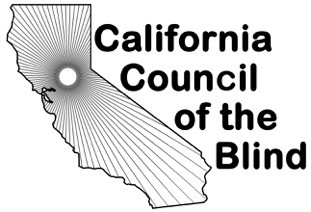California Parks Project Update
By Susan Glass
In the Winter 2018 issue of the BC, Jamie Gibson-Barrowss published an article about visiting Yosemite National Park along with several other members of the Fresno and Yosemite Gateway chapters of CCB. What made their visit unique was the park's audio described UniD brochure and accompanying ranger lead tour. Jamie and her companions were some of the first to enjoy an opportunity that will soon be available to all blind and visually impaired Californians in any of the state's national parks. Four entities, (The University of Hawaii, The American Council of the Blind, Google Corporation, and the California Parks Service) are collaborating on this accessibility effort. The project got started when Dr. Brett Oppegaard, Thomas Conway, and Megan Conway, (all from the University of Hawaii Mānoa College of Social Sciences) obtained a grant from Google for the purpose of creating audio described versions of park brochures for all national parks. The audio versions would be available as MP3 downloads, and also as UniD apps to be used on an iPhone. In cooperation with ACB and CCB, blind and visually impaired Californians are testing the UniD app in California's national parks. The Fresno and Yosemite Gateway chapters were the first CCB groups to test the app in November of 2017. Then on Friday, April 27, 2018, the Silicon Valley and San Francisco chapters had the opportunity to try the app at Muir Woods National Monument. Here is installment 2 of our California parks experience.
Before proceeding further, I'd like to thank my colleague Noel Runyan for his excellent notes and collaboration on this article.
Nine members of the Silicon Valley chapter and seven members of the San Francisco chapter participated in the Muir Woods outing. We met at the Manzanita parking lot at the intersection of Highways 1 and 101 where we were greeted by Richard De La O—Accessibility Program Manager at the Golden Gate National Recreation Area (GGNRA), Thomas Conway—University of Hawaii Center on Disability Studies, and Michael Faw—Accessibility and Exhibits Specialists at the GGNRA. We loaded and tested two apps on our phones: the UniD app for the Muir Woods Park brochure, and the National Parks Service (NPS) Golden Gate app for descriptions of sites within Muir Woods Park itself. The NPS app utilizes Bluetooth signals to trigger points of interest descriptions as you walk through the park. Currently, wayside description triggering works only for Apple phones, and not yet for Android. It was necessary to load our apps in advance because there is no cell phone access within the park.
With phones now ready, we were shuttled into the park where we were greeted by Todd, an enthusiastic ranger who clearly loved his work, and the opportunity to introduce visually impaired visitors to the wonders of the park. Todd, Richard, Michael and Tom each shepherded a small group of us on a park walkabout. The formerly paved walking paths are being replaced with wooden sidewalks that float above the ground to protect the delicate roots of the redwood trees. Near the park entrance is an incredible topographical map of Muir Woods with every trail, look-out point, stream, and road labeled in braille, and assigned its own texture. Frank Welte and other employees of the San Francisco Light House were consultants for developing this map, and it was fascinating to hear him describe how the map was first made in clay, and how leather, beads and other objects were used to create the various textures for what ultimately became a metal structure. I walked around and around it, exploring every looping, switchback-laden path. The park is huge, and the map conveys its size and its meandering spread.
The weather that day was cool with partial sunlight, skittering clouds, and a companionable meandering stream to remind us that it seldom gets very warm in this redwood rain forest. One of my personal highlights was giving my San Francisco friend Linda Porelle a big hug as we stood together inside the burnt-out trunk of a redwood tree. Another highlight was exploring a braille labeled redwood tree ring that dated the tree's beginnings back to before the common era (BCE). Our walk was a collage experience as we moved between real time connections with each other and nature, and the rich information provided by our phone apps. NPS wayside and site descriptions of artwork on plaques was wonderful, with color and motion of plants and animals included.
After lunch we met for an hour with park staff to provide feedback on usability of both apps. Our feedback was collected in written surveys, and will help fine tune the apps. Generally, we would advise folks to take time to listen to the Muir Woods wayside descriptions before visiting the park. They would also find the UniD app an interesting and accessible way to find out about all the California parks.
In closing, we express our appreciation to Michael Faw, Richard De LaO, Thomas Conway, and Todd, as well as to sighted volunteers and family members who accompanied us. We also thank Dan Spoone, first Vice President of ACB, and Jo Lynn Bailey-Page, ACB Grants Writer, who work tirelessly behind the scenes to support and promote the parks project. ACB provided each chapter $250 to offset costs of the Muir Woods excursion. So onward to our next park.


